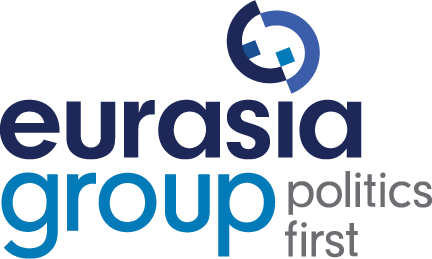Eurasia Group's Top Risks of 2025
Top Risks is Eurasia Group's annual forecast of the political risks that are most likely to play out over the course of the year. This year's report was published on 6 January 2025.
Top Risks is Eurasia Group's annual forecast of the political risks that are most likely to play out over the course of the year. This year's report was published on 6 January 2025.
IMPLICATIONS FOR Europe
European countries are relatively weak military powers that rely on an open global economy. This year's Top Risks will exacerbate many of the pressures facing Europe, especially as its main actor—the EU, comprising 27 member states and operating by consensus—lacks the agility and geostrategic coherence of its top trading partners, the US and China.
For the full list of the top global risks this year, please see Eurasia Group's Top Risks 2025.
- The EU is one of the primary beneficiaries—and staunchest defenders—of the rules-based, multilateral global order that has enabled Europe to deepen its political and economic integration. The bloc is, therefore, particularly vulnerable to the deepening of the G-Zero world, as described in Top Risk #1 (The G-Zero wins).
- The EU is ill-equipped to thrive in a world where transactional, zero-sum power politics prevail. With a more isolationist US and China an increasingly assertive force in global geopolitics, Europe will not be able to fill the vacuum and risks being the biggest loser of the top three global economies. A more personalized and single-minded leadership in both Washington and Beijing, with a preference for bilateral relations, threatens to bring power imbalances to bear to maximum effect.
- The EU is also at risk of being on the losing end of Donald Trump's more muscular and isolationist foreign and trade policies, per Top Risk #2 (Rule of Don). Similarly, Top Risk #3 (US-China breakdown) and Top Risk #4 (Trumponomics) will have knock-on effects on Europe, deepening the impact of Top Risk #7 (Beggar thy world).
- Faced with economic malaise, multiple security threats along its borders, defense shortcomings, and a rising tide of antiestablishment, nationalist sentiment, the EU was already on track for a difficult 2025. The return of a more empowered Trump, less incumbered by a more moderate establishment and congressional opposition than in his first term, will turbocharge these challenges; it will pose one of the most serious trials of European unity to date, and it will test the adage that the EU always pulls together in a crisis.
- Fresh transatlantic trade tensions, with the prospect of old and new tariffs triggering EU retaliation, will exert downward pressure on Europe's weak growth prospects this year. This will undermine recovery prospects for an EU economy that is still reeling from the after-effects of the inflation shock of 2022 while facing multiple deep-rooted structural issues.
- Expectations of even weaker growth in Europe, combined with the likely inflationary effects of Trump's trade, fiscal, and migration policies at home, have already caused substantial euro depreciation since October. While markets have brought forward expectations of European Central Bank (ECB) monetary easing as a result, a further slide in the currency and possible energy price hikes this winter could slow disinflation and weaken the ECB's hand to cut rates. This could, in turn, aggravate fiscal challenges in some high-debt EU countries—most notably in France, where parliamentary dysfunction has hampered efforts to stabilize public finances.
- At the same time, the EU will find itself increasingly caught in the middle of a deteriorating US-China relationship, and particularly rising trade tensions between Washington and Beijing. This is hardly new, but the culmination of a trend that started during Trump's first term and continued under President Joe Biden will become harder to handle for Europe. The only saving grace could be Beijing's focus on shoring up an ailing domestic economy and a corresponding eagerness to mitigate external pressures.
- Europe will struggle to reduce its economic reliance on China, as Trump ramps up pressure on the EU to do so. This will make it more and more difficult for the EU to sidestep the US-China rivalry. It will likewise threaten European economic interests and industrial ambitions, with a likely further escalation in tit-for-tat trade measures between the EU and China. New US tariffs on Chinese goods would aggravate dumping in European markets, fueling the competitive threat faced by European industry, including in key sectors such as electric vehicles and batteries.
- The EU is likely to overcome, or at least muddle through, the latest bout of external pressures it will face in 2025, as argued in the Red herring (Europe breaks). This will be in no small part thanks to a more effective leadership team in Brussels and notably in Berlin, where a less dysfunctional coalition government is likely to emerge following parliamentary elections in February.
- The EU, meanwhile, is already exploring ways to boost spending on security. This would enable it to continue to support Ukraine's war effort, with the goal of putting Kyiv in a stronger position ahead of likely negotiations on a ceasefire this year. But it would also help supplement strained national budgets in order to bolster Europe's inadequate defense capabilities—with the aim of raising defense spending well above NATO's 2%-of-GDP commitment, in line with US demands. On the trade side, the EU will initially seek to engage constructively with Trump to mitigate the risk of new tariffs, but it stands ready to retaliate in kind if this approach fails.
- While Trump's return will undoubtedly give more impetus to rising populist and antiestablishment parties and governments across the bloc, and despite the negative headlines, this is unlikely to fundamentally undermine the EU's cohesion or to seriously hamper decision-making in Brussels. Hungarian Prime Minister Viktor Orban's leverage in Europe is overstated, and he faces growing headwinds at home. Other important players such as Italy's Prime Minister Giorgia Meloni will remain anchored to the EU mainstream for now, despite their affinity with Trump.
- As the EU grapples with this troublesome backdrop, it will also remain the prime target of Russia's hybrid warfare and stabilization attempts, per Top Risk #5 (Russia still rogue). These actions will pose risks for the EU's digital, energy, and transport infrastructure. Russia can use migration to pressure eastern European countries, as well as cyberattacks, disinformation, and election interference to undermine the EU from within. The German elections in February are a key concern, followed by votes in the Czech Republic and Romania later in the year—after the country's presidential election results were annulled following allegations of a Russian influence campaign.
- Russia will ramp up these efforts in early 2025 as it seeks to improve its negotiating position in the lead-up to Trump-brokered Ukraine talks. They are unlikely to abate even in the event of a ceasefire. A halt to hostilities is unlikely to usher in a comprehensive peace agreement, meaning tensions between Europe and Russia are set to remain elevated, with economic and security consequences that weigh on the EU.
- Lastly, risks emanating from Top Risk #6 (Iran on the ropes), Top risk #9 (Ungoverned spaces), and Top Risk #8 (AI unbound) threaten to compound the challenges facing Europe. Any significant disruption to crude oil or gas exports, and market volatility on the back of any US and/or Israeli strike against Iran, could saddle the EU's already struggling industries with even higher energy costs. Any new surge in energy inflation would mean high interest rates for longer. Weakening governance in the G-Zero world will stress the EU where it is weakest: in responding to external developments that undermine its security and stability—from extremist terrorism to migration. Meanwhile, faltering global cooperation on AI threatens to deal yet another setback to the EU's efforts to set standards and bolster European competitiveness in tech.
- The potential for lower oil prices, driven by expanding US and OPEC production, and a partial easing of gas prices following an expected ceasefire in Ukraine represent a possible silver lining for the EU, which is heavily dependent on energy imports. Relatedly, with the global energy transition safe despite Trump's return—as highlighted by the Red herring (Global energy transition stalls)—the EU will not be going against the grain. Instead, Europe stands to benefit from its efforts to lead the green transition by reducing energy costs, investing in local industries, and setting standards. Similarly, Europe can find cold comfort in the Red herring (Trump fails), which anticipates that short-term wins will prevent Trump from wreaking global havoc. Accordingly, while the EU will hold together, the challenges highlighted in this year's Top Risks will severely test its unity, geopolitical relevance, and economic competitiveness.


